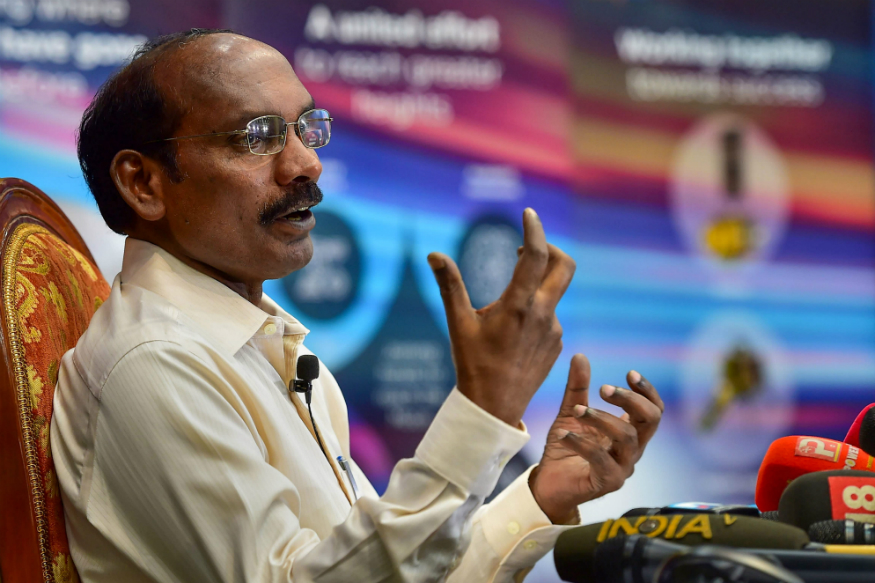
Indian Space Research Organisation (Isro) launched its second moon mission, Chandrayaan-2, from Andhra Pradesh’s Sriharikota on Monday, a week after the lift-off was aborted at the eleventh hour due to a technical snag.
Chandrayaan-2 lifted off onboard Isro’s most powerful launcher, the 640-tonne rocket Geosynchronous Satellite Launch Vehicle-Mark III (GSLV-Mk III), from the country’s only launch site Satish Dhawan Space Centre. Lakhs of people watched the launch in India and abroad as the heavy-lift rocket roared off into the skies.
Follow Chandrayaan 2 launch live updates here
The launcher of Chandrayaan-2, nicknamed ‘Bahubali’, measured 44metres in height. The three-stage vehicle is capable of launching 4-tonne class of satellites to the Geosynchronous Transfer Orbit (GTO).
The 20-hour countdown to the lift-off, a mission which has been described as one of the most complex ever undertaken by the space agency, had begun on Sunday at 6.43pm.
India deferred its second lunar mission, Chandrayaan-2 for the fifth time last Monday, roughly an hour before blast-off after scientists noticed a glitch in the launch vehicle, delaying its bid to become only the fourth country. The lunar landing mission was rescheduled for July 22 after scientists corrected the snag.
The Rs 978 crore project will follow Chang’e-4, launched by China, which in January became the first spacecraft to successfully land on the far side of the moon. Only three countries, the United States, the erstwhile Soviet Union and China, have successfully landed missions on the moon.
The 3,850kg Chandrayaan-2 consists of an orbiter that will circle the moon for about a year, taking images and testing the atmosphere; a lander named Vikram, after India’s space pioneer Vikram Sarabhai; and a rover named Pragyaan, which means wisdom in Sanskrit.
The Rs 375 crore GSLV-Mk III carrying the orbiter, lander, and rover will launch the Rs 603 crore Chandrayaan-2 into an Earth parking orbit 16 minutes into its flight. The distance between the Earth and the moon is about 3.844 lakh km.
The mission will send the rover to the moon’s south pole and Indian scientists hope to directly observe the water ice on the lunar surface, evidence for which was gathered by spectrometers aboard India’s first moon mission in 2008.
Isro has said Chandrayaan-2 will be injected into an Earth parking 170×40400 km orbit. The spacecraft’s orbit will be raised by a series of manoeuvres to put it on Lunar Transfer Trajectory. On entering the Moon’s sphere of influence, on-board thrusters will slow down the spacecraft for Lunar Capture.
From its launch to the soft landing, the entire mission is set to take about 58 days. After the launch, it will take 16 days to raise the orbit and then five days to reach the moon’s orbit. Once there, it will make an orbit around the moon for 27 days, before the lander makes an attempt to de-orbit. After four more days, the lander will land in a difficult manoeuvre that lasts 15 minutes.
The landing of Chandrayaan-2 is Isro’s biggest challenge till now, the 15 minutes when the lander separates and before it soft lands on the moon have been called “terrifying moments” by the agency that has never undertaken such a flight.
Chandrayaan-2 will attempt to soft-land Vikram and Pragyan in a high plain between two craters, Manzinus C and Simpelius N, at a latitude of about 70° south. Ample solar light for solar power, the nearly flat surface with good visibility for a safe landing and expected the higher presence of water and minerals are the main reasons why the space agency chose Moon’s south-pole for landing.
The rover and the lander will have a life of one lunar day (14 earth days) and for that lunar day, it will conduct scientific experiments. The orbiter, however, has a life of one year.
The first landing pictures may be available within 15 minutes of the lander touching down. However, it will take four hours from the time of landing to the time the rover comes out from the lander.
A National Aeronautics and Space Administration (NASA) instrument for LASER ranging will be carried by the mission as a mark of cooperation between the two space agencies. India will use the Deep Space Network of the US space agency on payment basis for navigation and guidance.
The mission carries 13 Indian scientific instruments for experiments. Imaging of rock will be done to find elements like magnesium, calcium and iron and also for signs of water. Mission will also study the exosphere of the moon.
Isro is following the same launch strategy followed for Chandrayaan-1. However, Chandrayaan 1 was just an orbiter while Chandrayaan-2 has lander and rover components adding complexity to the mission.
During the countdown, the rocket and the spacecraft’s systems will once again undergo checks and fuel will be filled to power the rocket engines.
GSLV-Mk III will also be used for India’s manned space mission slated in 2022.
It is a giant leap in India’s space program and its success will solidify its place among the world’s spacefaring nations with Chandrayaan-2 aimed landing a rover near the unexplored south pole.
